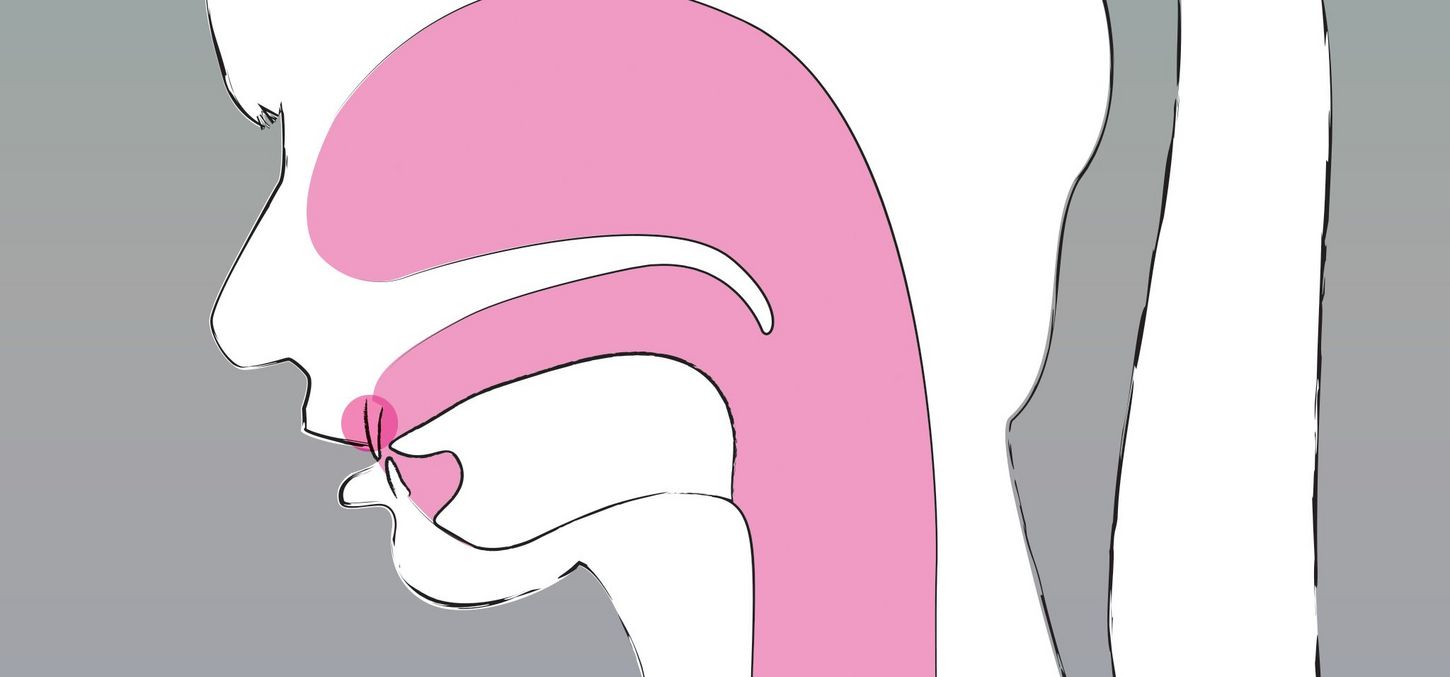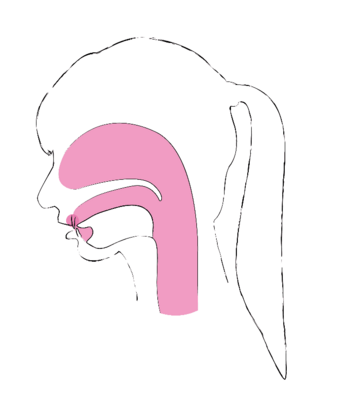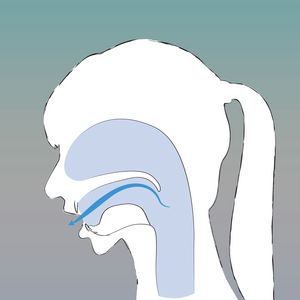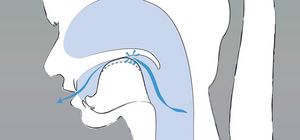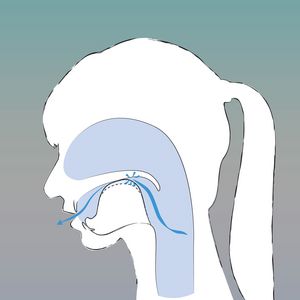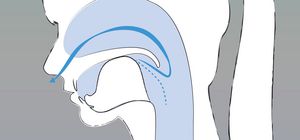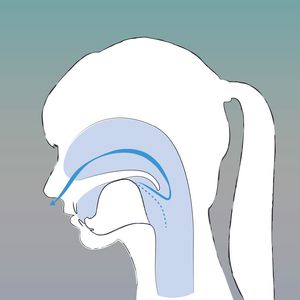Exercise
One of the best exercises to improve your pronunciation of Sanskrit is to consciously articulate all sounds produced at one place of articulation. Watch how similar the vibration of individual letters in the mouth feels and how you can easily move from one letter to the next. In this exercise, the phonation space becomes closer and closer:
- l̥: vowel - The phonation space is completely open with the tip of the tongue positioned at the teeth. A short breath of air sets this space into vibration. Similar to a babbling "l".
- l̥̄: vowel - The phonation space is completely open with the tongue in the same position as above. You can feel a longer vibration between your teeth.
- l: semivowel - The phonation space is slightly narrowed down. The vibration only occurs with the succeeding vowel.
- s: fricative - The tongue is positioned at the tip of the teeth. The air swirls there.
- t: plosive - The tongue is pushed shortly to the tip of the teeth. Then the pressure is released and the air bursts out.
- th: plosive, aspirated - Followed by a breath of air.
- d: plosive, voiced - With voice.
- dh: plosive, voiced, aspirated - Once again followed by a breath of air.
- n: nasal - The closure remains, air streams out through the nose.
Dental vowels - the "l sonant"
- l̥ / l̥̄: This sound is used in hardly any Western language. To produce it, slightly push out your tongue between your front teeth (dental). Blow out some air for a short l̥. The long l̥̄ lingers longer; however, it's as good as nonexistent in Sanskrit as well.
Examples:
- l̥: Engl.: table (rare sound)
- l̥̄: Sound does practically not exist.
Dental plosives
- ta: The tip of the tongue is between or at the front teeth. The contact is released after slight pressure.
- tha: The analogue sound with more air.
- da: The analogue sound with vibration or voice.
- dha: The voiced sound with more air.
Beispiele:
Please note: For a German t or d, the tongue is positioned right at the bridge between teeth and gums at the upper jaw (alveolar). For the dental sounds in Sanskrit, though, it should be positioned a bit further down, closer to the tip of the front teeth. Some speakers of Sanskrit even push out their tongue between the front teeth. With a bit of an effort, though, we still find German examples to illustrate the correct pronunciation:
- ta: Tasse
- tha: Thalamus
- da: Davos
- dha: Feldhase
The aspirated version of this sound occurs only in compound words in German.
Dental nasal
- na: The sound is nasalised.
Examples:
Please note: For a German n, the tongue is positioned right at the bridge between teeth and gums at the upper jaw (alveolar). For the Sanskrit dental sounds, though, it should be positioned slightly further down toward the tip of the front teeth. Some speakers of Sanskrit even push out their tongue between the front teeth. With a bit of an effort, though, we still find German examples to illustrate the correct pronunciation:
- na: Natur, Name
Dental semivowel
- la: produced by bringing the tongue closer to the teeth (dental).
Examples:
- la: Land
Identical to the German sound.
Dental fricative
- sa: Here, the tongue is positioned directly at the teeth (dental). The resulting sound is similar to the (unvoiced) s also common in Southern Germany.
- ha: a guttural fricative (5).
Examples:
- sa: Muss, Engl: Sunday, summer
An unvoiced s, different from the voiced s common Northern Germany as, for instance, in Sonne.
